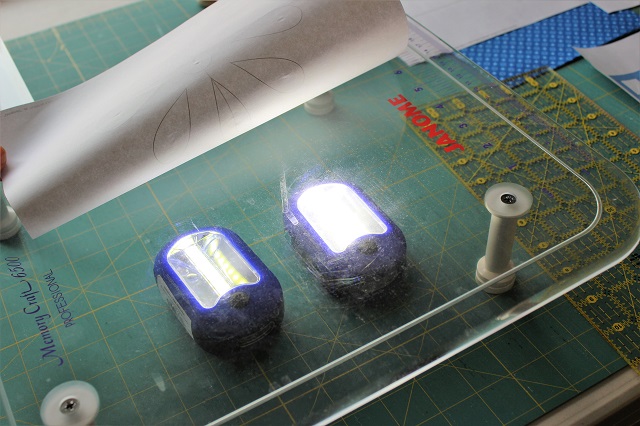Want to alleviate the tedium of pulling threads to the top at every start, when the next start is just stitches away? Want to make stitching a quilting design more efficient? Then try jump stitch quilting!
For owners of embroidery machines, this should be familiar.
Digitized designs employ 'jump stitches' to get from one area to another in a design. Sometimes the design uses stitches, but most of the time it's a jump stitch. That's un-stitched thread between different design areas, with lock stitches at each end.
In this picture from Brother, USA, the circled areas show how jump stitches are used in this embroidered design.
I'm all about efficiency, so the jump stitch concept really came in handy yesterday when I was quilting overlapping lines. It was far easier to make jump stitches with lock stitches at each end, than to clip threads and start again pulling up and holding threads.
Below shows stitching up to the line, adding lock stitching at the line, then jumping over and restarting, with lock stitches, on the other side.
Then it's easy to continue the design,
and repeat the process in the other direction, creating two jump stitches over the previous quilting.
Since each end is locked, those jump stitches can now be trimmed away, on the front and the back.
My design also required some straight lines behind these crossed bars, which meant more jump stitches. Because they're so flat, they're hard to see - just follow the white arrows, which shows half of them.
After stitching, they're all clipped to clean up the design.
And what a time saver! This was so much easier than locking, clipping the threads, moving to the new area, pulling up threads, and locking, just to stitch a few stitches. I could have backtracked to stitch this design, but one thread pass looks much nicer.
So, that's my tip for today - make use of jump stitches in a quilting design to get the needle where it needs to be, and to make more efficient use of quilting time.
Happy Quilting!

Thank you for following!














































